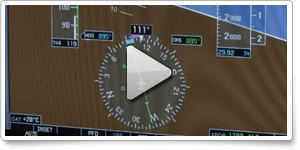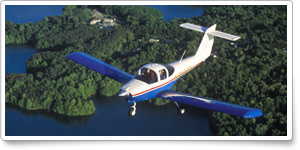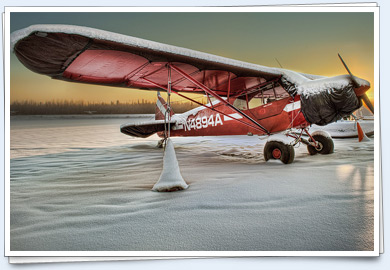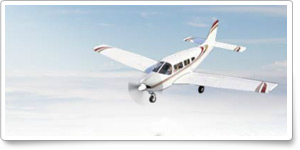| ||||||
| Doing the math |
| |||||
| Sponsored by: | ||||||
Training TipsDoing the math One such number is your aircraft’s useful load—the weight of the occupants, baggage, usable fuel, and drainable oil. It’s “the basic empty weight subtracted from the maximum allowable gross weight.” Look up the useful load in your aircraft’s weight-and-balance documentation; the information is required to be available in the cockpit. Remember that your useful load data may differ markedly from generic information provided in an off-the-shelf pilot’s operating handbook (POH) for your make and model aircraft. Use only the specifically calculated information for your aircraft! (And if you find yourself wondering just how much weight and balance matters, see the Air Safety Institute’s Essential Aerodynamics course for a practical exercise.) Knowing the useful load at the start of your flight planning can tell you right away whether a particular load is excessive for the flight. Suppose your two-seat Cessna 152 trainer has a useful load of 490 pounds. Full fuel, consisting of 24.5 usable gallons, weighs in at 147 pounds (100 low-lead avgas weighs six pounds a gallon). Now you have just 343 pounds available for people and baggage. Can the two occupants of your aircraft, at their weights—again, not generic weights from the POH—each bring along a well-packed suitcase? Crunch the numbers. If the basic answer is “affirmative,” also check for any baggage-compartment weight restriction. Still good? Go ahead and perform a complete weight-and-balance calculation, including computation of the center of gravity location to ensure that the load will remain within approved limits. What if the answer is negative and the useful load has been exceeded? Now you must plan to lighten the load. That could mean departing with less-than-full fuel, and adding a fuel stop to your planned route. If that’s the decision, give the flight school an early heads-up; many have a policy of keeping their aircraft fuel tanks topped off. Before departure with partial fuel, check carefully for water that may have condensed in the fuel tanks. Safe piloting practices also demand that you assume a high fuel burn as a margin of error in your planning, and that you have an accurate way to measure the partial fuel loads with which you will take off.
Flight Training NewsSpring training: Applications open for 2012 scholarshipsAOPA is accepting applications for three $5,000 flight training scholarships to be awarded in the spring at the Sun ‘n Fun International Fly-In and Expo. Student pilots working toward a sport, recreational, or private pilot certificate may apply online for the AOPA Flight Training Scholarship, Erral Lea Plymate Memorial Scholarship, and Jeppesen Flight Training Scholarship through Feb. 10. Read more >> LSA designed for flight school marketU.S. Sport Aircraft, Fort Pierce, Fla., said it will sell a variant of the Czech-built SportCruiser light sport aircraft designed for the flight school market. The SportCruiser Classic will have the same handling characteristics and canopy as the SportCruiser, but it will have analog instruments in the panel. The avionics package includes a Garmin SL40 communication radio, Garmin aera 500 GPS, and Garmin GTX 327 transponder. The introductory price is $119,500. Chat with the ‘Flight Training’ editors Jan. 4Join Flight Training editors Ian Twombly and Jill Tallman on Jan. 4 for the very first live Flight Training Facebook chat of 2012. Bring your flight training questions; talk about the current issue of the magazine; or share your success stories. The chat will take place from 3 to 4 p.m. Eastern (noon to 1 p.m. Pacific). Log on to the Flight Training Facebook page and click the Chat link on the left of the page.
Be a better communicator when talking to ATCCommunicating effectively with ATC is one of the hardest skills new pilots must learn, and there’s no getting around the fact that the more you do it, the better you become. But most aviation textbooks don’t teach these communication skills. Take the safety quiz on ATC procedures from the Air Safety Institute and help get yourself up to speed when it comes to some of the more nuanced techniques of working with controllers. SunState Aviation building new facilitySunState Aviation at Kissimmee Gateway Airport in Orlando, Fla., has begun construction of a new 16,000-square-foot building. It will feature an expanded hangar for aircraft maintenance as well as larger classrooms, a simulator room, and an FAA testing center. A sandwich shop, pilot supply shop, and observation decks are planned. A grand opening is planned for fall 2012. SunState specializes in accelerated flight training for the sport and private pilot certificates as well as instrument, commercial, ATP, multiengine, and helicopter flight training.
Training ResourcesMany people want to learn to fly but aren’t sure if they can progress through the requirements of the private pilot certificate. If that’s your situation, don’t forget you have options. You can earn a recreational pilot certificate or a sport pilot certificate. Both require fewer hours of training than a private pilot certificate (which translates to fewer dollars spent), but they also pose limitations on the type of flying you can do and the aircraft you can fly. For more information, see AOPA’s Guide to Learning to Fly.
Did you know that student pilots who join AOPA are three times more likely to complete their flight training? Membership includes unlimited access to aviation information by phone (800/USA-AOPA, weekdays from 8:30 a.m. to 6 p.m. Eastern time) or from Flight Training Online or AOPA Online. If you're not already a member, join today and get the pilot’s edge. Login information is available online.
How to intercept a VOR radial Career Pilot | ||||||||||||||||||||||||||||||||||||||||||||||||
| | Introducing, the best pilot headset ever from Bose. NEW Bose A20™ Aviation Headset |
AOPA Career Opportunities
Ever dream of turning your passion for aviation into a career? We’re looking for a senior government analyst, director of corporate finance, manager of flight training programs, online product manager, AOPA Live producer/videojournalist, associate editor–Web/ ePilot, and aviation technical specialist. To learn more about other AOPA career opportunities, visit AOPA Online.
Community
| |||
AVIATION EVENTS & WEATHER
| To include an event or to search all events in the calendar, visit AOPA Online. For airport details, including FBO fuel prices, see AOPA Airports. | ||||||||||||||||
Final ExamQuestion: I've heard the term “category” used to describe both airplanes and pilot ratings, and I'm confused about which is correct. Could you give me a definition of “category”?
Answer: Actually, "category" is correctly used in the context of both aircraft and airmen, though with different meanings for each. When referring to airmen certification (FAR 61.5), category means a broad classification of aircraft—for instance, airplane, rotorcraft, glider, lighter-than-air, or powered lift. A pilot could be certified for "airplane single-engine land," with "airplane" being the category of aircraft. When describing aircraft certification, category refers to the way aircraft are grouped, based on operating limitations or intended use. For instance, aircraft are certified in these categories: transport, normal, utility, acrobatic, limited, restricted, or provisional.
Got a question for our technical services staff? Email [email protected] or call the Pilot Information Center, 800/872-2672. Don’t forget the online archive of “Final Exam” questions and answers, searchable by keyword or topic.
Instrument Tip | ||||||||||||||||
Flight Instructor Refresher Clinics | Air Safety Institute Safety Seminars | |||||||||
For a complete schedule, see AOPA Online. Can’t make it in person? Sign up for the CFI Refresher Online. |
Topics vary—for details and a complete schedule, see AOPA Online. | |||||||||
| | ||||
| ePilot Flight Training Editor: ePilot Editor: | Contributors: Alyssa Miller | | Production Team: Melissa Whitehouse Siobhan Byrne Lezlie Ramsey William Rockenbaugh Mitch Mitchell | Advertise in ePilot: |
| Member Tools: Send feedback | ePilot Archive Got news or questions? Contact ePilot. Having difficulty using this service? Visit the ePilot Frequently Asked Questions at AOPA Online or email us. | ||||




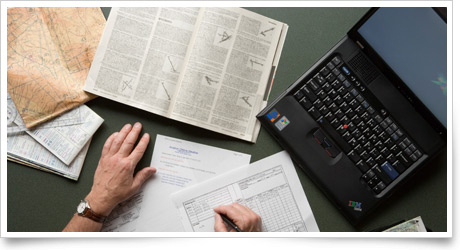 Not all flight planning has to be done hunched over graphs or by punching variables into a flight computer. Memorizing some make-or-break numbers can tell you at a glance whether you can launch on a flight as planned, subject to other considerations.
Not all flight planning has to be done hunched over graphs or by punching variables into a flight computer. Memorizing some make-or-break numbers can tell you at a glance whether you can launch on a flight as planned, subject to other considerations.